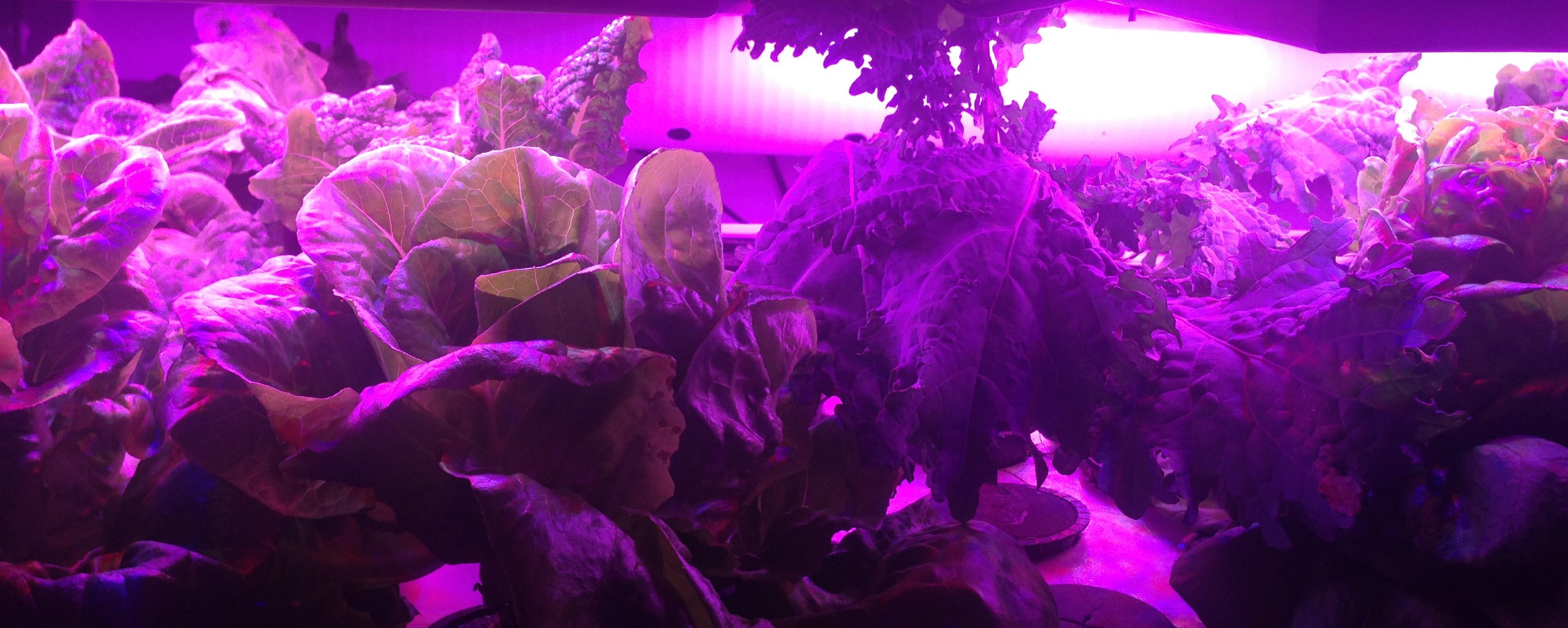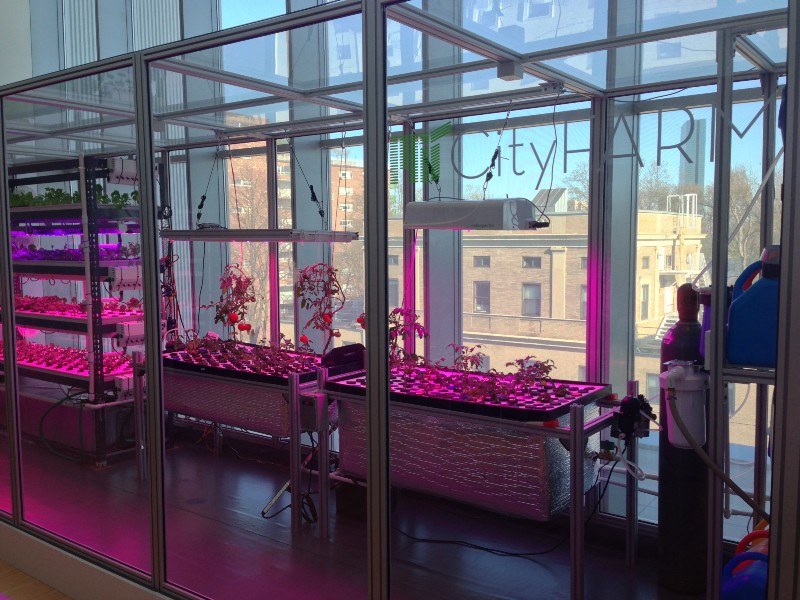

“Does eating count as sequestering carbon?” wondered Caleb Harper as we munched on leaves of kale at MIT’s Media Lab in downtown Cambridge, Mass. The question is typical of Caleb’s curiosity and attention to detail. As director of MIT’s CityFARM initiative, his mission is nothing less than transforming the way the world eats, one salad at a time.
The kale, like Caleb’s tomatoes and strawberries, are bursting with freshness and flavor. That’s hardly surprising, seeing as we harvested them only seconds before, from an eerily glowing greenhouse installed directly behind the Media Lab’s striking glass wall.
CityFARM is exploring the possibility of growing fruit and vegetables inside the glass curtain walls of high-rise buildings. “It seems crazy but a lot of money is spent on these facades,” said Harper. “Why not make that six inches of space six feet, and turn it into a practical part of the building that’s feeding its residents and making money?”
The need to reinvent agriculture is pressing. The average American meal travels over 1,000 miles from farm to plate, with up to a 40 percent loss along the way. And every calorie you get from the food you eat takes about ten times as much energy in fossil fuels to grow, process and transport. CityFARM is trying to reduce those numbers by growing crops as close as possible to where they will be consumed.

To do this, it is using aeroponic technology originally imagined by NASA for use in months- and years-long missions to Mars. Aeroponics suspends plants in mid-air, providing them with all the nutrients they need via precisely controlled bursts of mist. This uses up to 90 percent less water than traditional farming. CityFARM then augments natural sunlight with high-efficiency LED lights tuned to the red and blue wavelengths that plants use for photosynthesis, slashing the time from planting to harvest by three quarters.
“Our goal is to make a plant factory that’s more sustainable than and yet economically competitive with conventional farming,” said Harper. “We’re still five to ten years from that, but one of the byproducts of our lab is our discovery that taste begins in growing. I can produce sweetness and acidity by putting different stresses on the plants.”
Harper believes that one of the first applications for the technology is likely to be chefs seeking signature varieties of micro-greens for their restaurants–ones they can grow 365 days a year. The city of Detroit has also shown an interest. “I really believe that inside everyone is a tiny farmer who believes they can grow things,” said Harper. “But it could be that producing food is only secondary for our skyscraper facades. Their real value could be as carbon sinks, or helping people rethink their relationship with food–where their cafeteria food comes from and what it tastes like.”
Either way, the next generation of truly green buildings should look–and taste–good enough to eat.


How We Get To Next was a magazine that explored the future of science, technology, and culture from 2014 to 2019. This article is part of our The Future of Food section, which covers new innovations changing everything from farming to cooking. Click the logo to read more.
